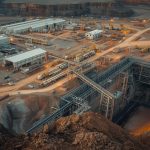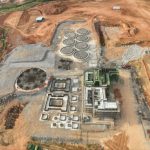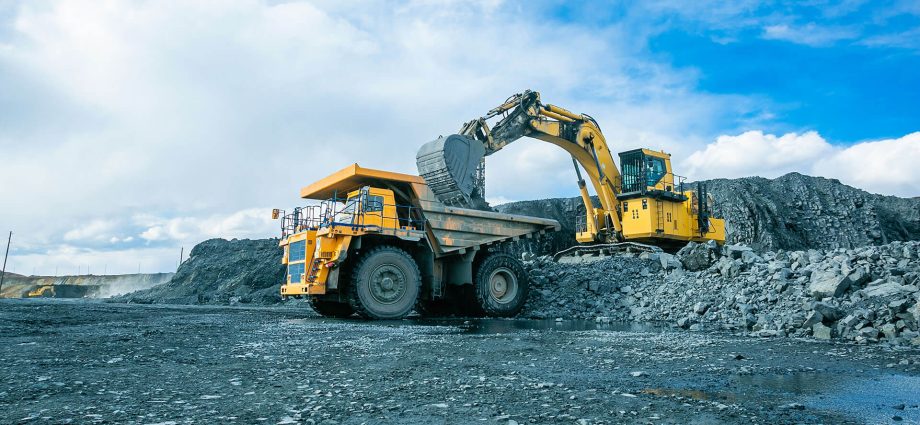Digital Transformation in Mining: Smarter Material Flow and Weighing Solutions
In today’s mining industry, digitalization is no longer a distant vision—it is rapidly becoming a cornerstone of efficient, safe, and sustainable operations. Across the globe, mining companies are under increasing pressure to manage vast material flows more effectively, reduce operational costs, and meet stringent environmental and reporting requirements. At the heart of this transformation lies a deceptively simple but crucial activity: weighing.
While often overlooked, weighing is one of the most important touchpoints in mining operations. Every truckload of ore, waste rock, or processed material passes through scales at multiple stages of its journey. Traditionally, weighing has been treated as an isolated action, recorded manually or logged in separate systems. But with digital tools and cloud-based platforms, industrial weighing is evolving into a central hub for managing material flows in real time.
The Critical Role of Material Flows in Mining
Mining is an industry of massive movements. Every day, thousands of tonnes of ore, aggregate, and byproducts move from extraction sites to crushers, processing plants, storage facilities, and transport hubs. The ability to accurately measure, track, and optimize these flows directly impacts productivity, profitability, and sustainability.
For decades, many mines have relied on manual input and disconnected systems to monitor material movements. This approach, while functional, is prone to errors, delays, and inefficiencies. A single mistake in weighing can cascade into misallocated costs, inaccurate reporting, or missed delivery targets. In a sector where margins are tight and operational risks are high, such inefficiencies can be costly.
This is where digitalization comes into play.
From Scales to Smart Data: The Power of Digitalization
Modern digital weighing solutions are transforming scales from static instruments into connected data points. By integrating Internet of Things (IoT) technologies, cloud-based platforms, and automated reporting, weighing stations now provide continuous streams of information about material flows.
This data-driven approach unlocks several benefits:
- Real-time visibility: Mine operators can monitor truck movements, load volumes, and material distribution instantly, reducing bottlenecks and downtime.
- Improved accuracy: Automation minimizes human error in logging weights, driver details, or load information.
- Integrated processes: Digital weighing connects with enterprise resource planning (ERP) systems, inventory management, and transport scheduling.
- Enhanced compliance: Transparent records simplify regulatory reporting and support sustainability initiatives.
Instead of being a routine checkpoint, weighing becomes a central node in the digital ecosystem of a mine.
mScales: Digital Weighing in Practice
One example of how industrial weighing is adapting to this new digital era is the cloud-based service mScales. Designed for industries where material flows are part of daily operations, mScales digitizes the entire weighing process—from vehicle identification to automated reporting.
The benefits extend beyond efficiency. With mScales, mining companies gain actionable insights from their weighing data. Managers can analyze patterns, optimize transport routes, and even forecast material needs more accurately. This helps mines align their operations not only with productivity targets but also with sustainability goals, by minimizing unnecessary transport and fuel consumption.
Safety, Sustainability, and the Future of Mining Operations
Digital weighing solutions also contribute to safety and environmental performance—two areas under intense scrutiny in the mining sector.
- Safety: Automated weighing reduces the need for human interaction at busy weighbridges, minimizing the risk of accidents. Real-time monitoring helps identify overloaded trucks before they become hazards.
- Sustainability: Accurate weighing ensures more efficient use of resources, less wasted energy in transport, and better control over material losses. Reliable data also supports transparent environmental reporting, an increasingly important requirement for investors and regulators alike.
Looking ahead, the integration of artificial intelligence and predictive analytics with digital weighing systems is set to take mining efficiency to the next level. Future solutions may automatically trigger alerts when anomalies occur, recommend optimal transport routes, or even adjust production schedules based on material flow data.
Conclusion
Digitalization is redefining the mining industry’s approach to material flow management. What was once a simple task—placing a truck on a scale—has become a strategic point of control for entire operations. By adopting digital weighing platforms such as mScales, mines gain real-time visibility, improved accuracy, and the ability to make data-driven decisions that enhance productivity, safety, and sustainability.
In a world where mining companies face increasing demands for transparency and efficiency, industrial weighing is no longer a minor checkpoint. It is a vital element of the digital mine—helping the industry move smarter, faster, and more responsibly into the future. More information https://www.mscales.com/















